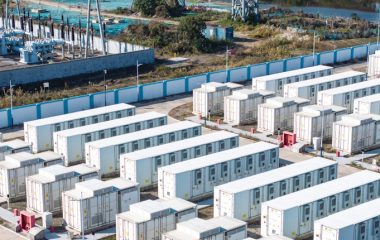
Photo: ThyssenKrupp on Facebook
The European Commission has approved Germany’s state aid measures of up to EUR 2 billion to ThyssenKrupp for the decarbonization of steel production processes using hydrogen. ArcelorMittal in France will receive EUR 850 million for the same purpose.
The process of decarbonization of European steel and cement industries, which until recently was mainly limited to pilot projects, is now gaining momentum with subsidies from the European Union and its member states. It will make the companies there more competitive as they will no longer be burdened with carbon dioxide emission costs under the Emissions Trading System (EU ETS).
In the Western Balkans, the two sectors will be affected by the Carbon Border Adjustment Mechanism (CBAM) through which the EU will charge a border tax on a group of imported carbon-intensive products including steel and cement. The tariffs will be introduced at the beginning of 2026 and gradually increase.
The European Union expects the countries in the region to establish their own emissions trading systems or adopt a joint system by no later than 2030, with the perspective of joining the EU ETS. However, Serbia and its neighbors have nowhere near such amounts available to subsidize the cement and steel industries.
The steelworks in Duisburg is planned to operate solely on green hydrogen from 2037
Germany has just received approval from the European Commission for a state aid package for ThyssenKrupp to decarbonize the production process in its plant in Duisburg, the largest steelworks in the EU. The industrial giant will use green hydrogen for the direct reduction of iron ore. The subsidy package amounts to up to EUR 2 billion, and the company will invest an additional EUR 1 billion.
The EU’s executive body has also approved France’s state aid of EUR 850 million to ArcelorMittal’s steelworks in Dunkirk for the transition to green or low-carbon hydrogen together with biogas and electricity. The same company was previously granted EUR 280 million from Belgium.
ArcelorMittal is getting EUR 1.1 billion in subsidies from France and Belgium for decarbonization
The first support measure for ThyssenKrupp is a direct grant of EUR 550 million for the construction of a direct reduction plant and two smelters instead of the existing blast furnace. Natural gas will be gradually replaced, and by 2037, the plant is set to operate solely on green hydrogen.
The second measure is a conditional payment mechanism, providing up to EUR 1.45 billion to cover the costs during the first ten years of operation of the new direct reduction plant and the procurement and utilization of renewable hydrogen.
The commissioning of the plant is expected in 2026
The new technology for green steel uses hydrogen instead of coke to purify iron ore. The company will implement its solution called tkH2Steel. The planned annual capacity for direct reduction is 2.5 million metric tons, from which ThyssenKrupp would produce 2.3 million tons of green steel.

The new installations are expected to start operating in 2026. The commission pointed out that the company would return a portion of the received aid to Germany if the project is successful. ThyssenKrupp aims to become carbon neutral by 2045.
In Sweden, EUR 190 million has been raised from private investors to start the construction of a steel mill in Boden that will use green hydrogen.
Norwegian startup Blastr Green Steel has said it would build a steel mill with an integrated hydrogen production facility in southern Finland. The investment is estimated at EUR 4 billion, and the start of operations is scheduled for 2026.


















Time for Tata Steel to do the same in Port Talbot. Wales.